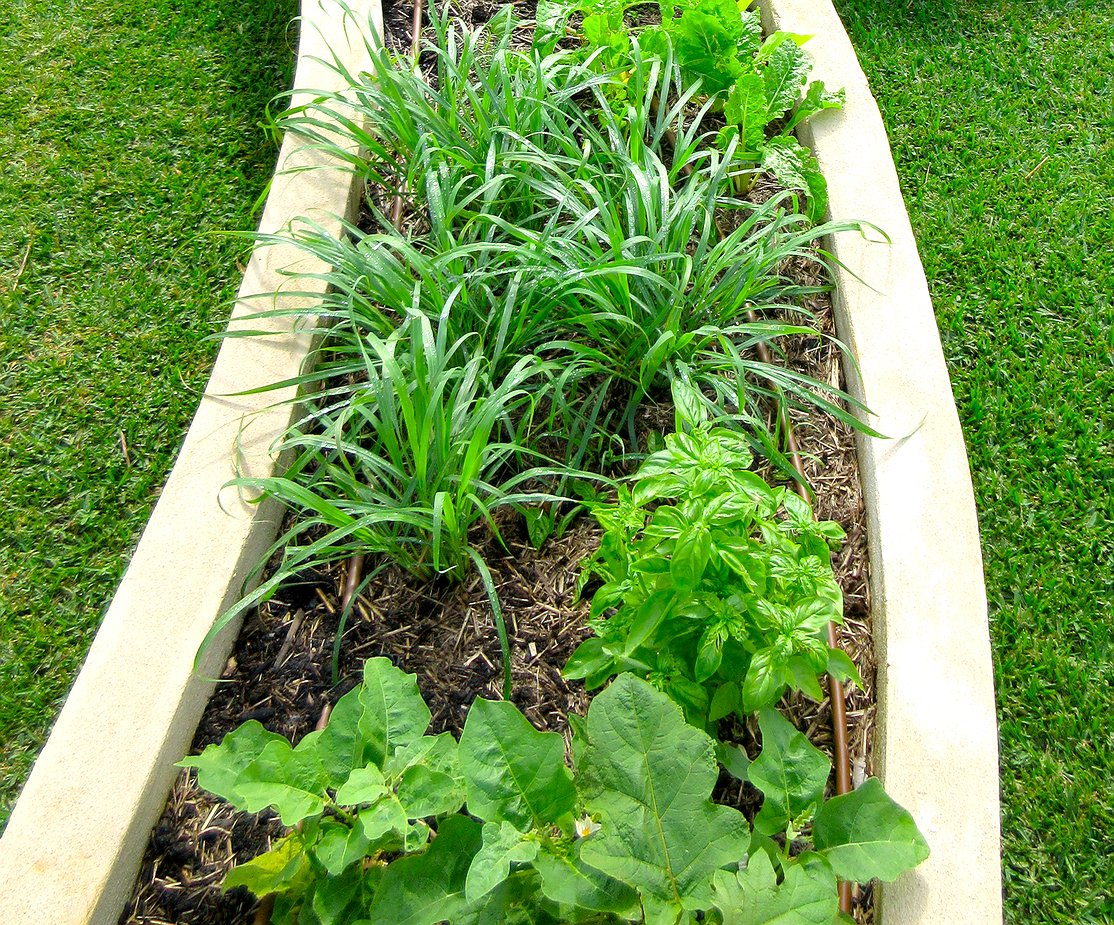Room for only one garden? Try edible landscaping
If your plans revolve around a pretty — and mostly ornamental — garden with flowers and shrubs and you haven't the time or inclination to put in a vegetable garden as well, consider an edible landscape.
Plan and plant your chosen annuals, perennials, flowering shrubs, and ornamental grapes, but simply consider using a few edibles that will also serve to beautify your garden.
We're not talking about a potager (pronounced pot-ah-shay). While a potager orné — a French name for an ornamental or fatal garden — is organized to not only have herbs and vegetables for the boiling pot or sauté pan, but to provide beauty for the eye. Our goal is the addition of a good-eating or seasonal selections that also happen to be eye-catching.
So, that said, plan your flower and shrub garden in a manner that allows room for "inserts." The perennials set the theme for the rest of the garden, with shrubs (roses, etc.) or large plants (valerian, Angelica, lilies, betony, etc.) as focal points.
Then, when selecting your shrubs, consider two or three low-bush blueberries. They represent edible landscaping at its best — lovely rounded mounds of green, later dotted with clusters of blueberries, turning into a fiery red-leaved display come Autumn. Blueberries, of course, prefer acidic soil, so can be placed near your roses, azaleas, hydrangeas, or rhododendrons. Or, if you want them elsewhere, plant them in pots, to be placed where they're most needed for effect (in a sunny spot, of course).
Another natural in the landscape is a beautiful culinary sage. There are a couple of beauties for ornamental as well as edible purposes: a pink-and-white striped leaf variety and a purple/green leaf selection. You'll find them in various catalogs or can inquire at area nurseries.
For border use, insert a couple of chive and parsley plants here and there among your primroses, coral bells, or Lady's Mantle — or even in a friendly groundcover such as creeping thyme. When the pretty purple chive blossoms appear, you'll find them just as appealing as the other flowers, and great in your salads, too.
The parsley, of course, is attractive all year round. Ornamental kale is another border possibility and will stay bright and crisp into the winter for admiring or eating.
Basil is an annual, and a few plants tucked among your ornamentals will provide beauty and welcoming pesto makings. Rosemary is another consideration — a perennial, it is too tender to live through our winters. Take your pot from the house and bury it in the flower garden for interesting texture and contrast until just before the first frost, when you will move it back inside. If you have roses, tuck some wild (alpine) strawberries around them as a companion to the roses and for sweet snacking.
If there's a trellis or fence backing your ornamental garden, plant a few Scarlet runner beans along the perimeter. They'll climb or ramble as circumstances permit and share the space with whatever you have growing, providing green leaves for shade and bright purple delicious pods for a truly attractive combination with sweet peas, climbing roses, or clematis.
Remember, only plant a few widely spaced seeds: You're looking for complementary/edible inserts, not an overwhelming of the chosen climber. After harvesting, you can simply (carefully) remove the vines and foliage, leaving the site to the main resident.
You can also consider a cluster of three eggplant plants, or bell (or hot) peppers for fillers since they are truly pretty. Red, yellow, or pear tomatoes are a possibility, too — and remember all of these can also be in containers.
What we're trying to do here is simply augment your ornamental (flower) garden with some edible possibilities that are also ornamental. So I'm not suggesting many of the truly ornamental veggies such as rainbow chard, lettuces, etc., since we're looking for the credibility of a true flower garden.
Also, I'm not listing the many edible flowers you could use, because many people are still not into eating their flowers and just want them growing in the landscape.
Too, I've not listed berries that need special cultivation, such as raspberries. You could, however, consider currants or gooseberries (if you would make use of them). The selections I've suggested are within the realm of ornamental beauty and happen to be edible, so they won't give your garden the look of a quasi-vegetable plot (though a red-stemmed rhubarb is indeed a great perennial "bush").
With the preceding suggestions in mind, design your perennial beds according to your personal landscape, incorporating any perennial edibles you may have decided on, and allowing a little space here and there for inserting pots or plants when the time comes. In the late summer, you can look fondly at your beautiful ornamental garden as you enjoy a dinner featuring purple pod beans steamed with basil!
Editor's note: For many years, Valle Novak wrote gardening and cooking columns for the Daily Bee. "Weekend Gardener" and "Country Chef" became renowned for their humor, information, and common-sense advice on how to do everything from planting to cooking. She left behind many columns to delight her many fans. This is one such column, originally published on March 4, 2001.





